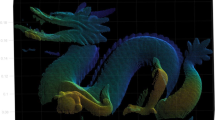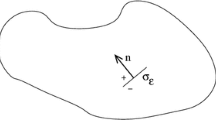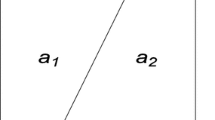Abstract
Certain structure detection problems can be solved by sampling a parameter space for the different structures at a finite number of points and checking each point to see if the corresponding structure has a sufficient number of inlying measurements. The measurement space is a Riemannian manifold and the measurements relevant to a given structure are near to or on a submanifold which constitutes the structure. The probability density function for the errors in the measurements is described using a generalisation of the Gaussian density to Riemannian manifolds. The conditional probability density function for the measurements yields the Fisher information which defines a metric, known as the Fisher-Rao metric, on the parameter space. The main result is a derivation of an asymptotic approximation to the Fisher-Rao metric, under the assumption that the measurement noise is small. Using this approximation to the Fisher-Rao metric, the parameter space is sampled, such that each point of the parameter space is near to at least one sample point, to within the level of accuracy allowed by the measurement errors. The probability of a false detection of a structure is estimated. The feasibility of this approach to structure detection is tested experimentally using the example of line detection in digital images.
Similar content being viewed by others
References
S.-I. Amari, Differential-Geometrical Methods in Statistics. Lecture Notes in Computer Science, Vol. 28. Springer, 1985.
V. Balasubramanian, “A geometric formulation of Occam’s razor for inference of parametric distributions,” Report No. PUPT-1588, Dept. of Physics, Princeton University, http://www.arxiv.org/list/nlin.AO/9601, 1996.
V. Balasubramanian, “Statistical inference, Occam’s razor and statistical mechanics on the space of probability distributions,” Neural Computation, Vol. 9, pp. 349–368, 1997.
T.M. Breuel, “Finding lines under bounded error,” Pattern Recognition, Vol. 29, No. 1, pp. 167–178, 1996.
I. Chavel, Eigenvalues in Riemannian Geometry, Academic Press Inc., 1984.
I. Chavel, Riemannian Geometry: A Modern Introduction, Cambridge Tracts in Mathematics, Vol. 108, CUP, 1996.
T.M. Cover and J.A. Thomas, Elements of Information Theory, John Wiley and Sons, 1991.
W. Feller, An Introduction to Probability Theory and its Applications, Vol. 1. 3rd edition, revised printing, Wiley, 1968.
M.A. Fischler and R.C. Bolles, “Random sample consensus: A paradigm for model fitting with applications to image analysis and automated cartography,” Communications of the ACM, pp. 381–395, 1981.
R.A. Fisher, “On the mathematical foundations of theoretical statistics,” Phil. Trans. R. Soc. Lond. Series A, Vol. 222 A, pp. 309–368, 1922.
S. Gallot, D. Hulin, and J. LaFontaine, Riemannian Geometry, 2nd edition, Univer-sitext, Springer, 1990.
R.C. Gonzalez and R.E. Woods, Digital Image Processing, 2nd edition, Prentice Hall, 2002.
R. Hartley and A. Zisserman, Multiple View Geometry in Computer Vision, CUP, 2003.
J.H. van Hateren and A. van der Schaaf, “Independent component filters of natural images compared with simple cells in primary visual cortex,” Proc. R. Soc. Lond. Series B, Vol. 265, pp. 359–366, 1998.
J. Illingworth and J. Kittler, “A survey of the Hough transform,” Computer Vision, Graphics, and Image Processing, Vol. 44, pp. 87–116, 1988.
H. Jeffreys, Theory of Probability, Clarendon Press: Oxford, 1998.
K. Kanatani, Statistical Computation for Geometric Optimization: Theory and Practice, Elsevier, 1996.
S. Kotz and N.L. Johnson (Eds.), Breakthroughs in Statistics. Vol. 1. Foundations and Basic Theory, Springer Series in Statistics, Springer-Verlag, 1992.
V.F. Leavers, Shape Detection in Computer Vision Using the Hough Transform, Springer Verlag, 1992.
H. Li, M.A. Lavin, and R.J. Le Master, “Fast Hough transform: A hierarchical approach,” Computer Vision, Graphics, and Image Processing, Vol. 36, pp. 139–161, 1986.
S.J. Maybank, “Fisher information and model selection for projective transformations of the line,” Proceedings of the Royal Society of London, Series A, Vol. 459, pp. 1–21, 2003.
S.J. Maybank, “Detection of image structures using Fisher information and the Rao metric,” IEEE Trans. Pattern Anal. and Machine Intell., Vol. 26, No. 12, pp. 1579–1589, 2004.
S.J. Maybank, “The Fisher-Rao metric for projective transformations of the line,” International Journal of Computer Vision, Vol. 63, No. 3, pp. 191–206, 2005.
I.J. Myung, V. Balasubramanian, and M.A. Pitt, “Counting probability distributions: Differential geometry and model selection,” Proc. Natl Acad. Sci., Vol. 97, pp. 11170–11175, 2000.
C.F. Olson, “Constrained Hough transforms for curve detection,” Computer Vision and Image Understanding, Vol. 73, No. 3, pp. 329–345, 1999.
C.F. Olson, “Locating geometric primitives by pruning the parameter space,” Pattern Recognition, Vol. 34, pp. 1247–1256, 2001.
C.R. Rao, “Information and the accuracy attainable in the estimation of statistical parameters,” Bull. Calcutta Math. Soc., Vol. 37, pp. 81–91, 1945.
J. Rissanen, “Fisher information and stochastic complexity,” IEEE Trans. Inf. Theory, Vol. 42, pp. 40–47, 1996.
J. Rissanen, “Complexity and information in data,” Entropy, in A. Greven, G. Keller, and G. Warnecke (Eds.), Princeton Series in Applied Mathematics, 2003, pp. 299–312.
W.J. Rucklidge, “Efficiently locating objects using the Hausdorff distance,” Int. Journal Computer Vision, Vol. 24, pp. 251–270, 1997.
M. Ulrich, C. Steger, and A. Baumgartner, “Real-time object recognition using a modified generalized Hough transform,” Pattern Recognition, Vol. 36, pp. 2557–2570, 2003.
S.R.S. Varadhan, “On the behavior of the fundamental solution of the heat equation with variable coefficients,” Communications on Pure and Applied Mathematics, Vol. 20, pp. 431–455, 1967.
M. Werman and D. Keren, “A novel Bayesian method for fitting parametric and non-parametric models to noisy data,” Proc. Computer Vision and Pattern Recognition, Fort Collins, Colorado, June 1999, Vol. 2, pp. 552–558, 1999.
S. Wolfram, The Mathematica Book. 5th edition, Wolfram Media, Inc., 2003.
R. Wong, Asymptotic Approximations of Integrals, SIAM, 2001.
Author information
Authors and Affiliations
Corresponding author
Rights and permissions
About this article
Cite this article
Maybank, S.J. Application of the Fisher-Rao Metric to Structure Detection. J Math Imaging Vis 25, 49–62 (2006). https://doi.org/10.1007/s10851-006-4533-6
Published:
Issue Date:
DOI: https://doi.org/10.1007/s10851-006-4533-6




